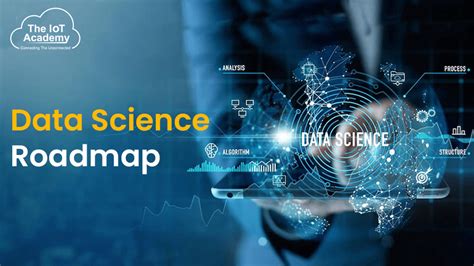Machine learning is at the heart of modern data science, empowering data scientists to uncover insights and drive decision-making through complex algorithms and models. As businesses and industries increasingly rely on data-driven strategies, the demand for skilled data scientists proficient in machine learning continues to grow. This guide delves into the key elements of mastering machine learning, covering essential algorithms, tools, and technologies that every data scientist should know. From understanding the core responsibilities of a data scientist to exploring best practices in data preprocessing and model evaluation, this article provides a comprehensive roadmap for aspiring and experienced data scientists aiming to excel in this ever-evolving field.
Embark on a detailed exploration of this topic with electrapk.com
1. Understanding the Role of a Data Scientist
Data scientists are essential in transforming raw data into valuable insights that guide strategic decisions. They possess a unique combination of domain knowledge, programming skills, and analytical expertise, enabling them to collect, process, and analyze data. This allows them to uncover hidden trends, patterns, and relationships. Their role often involves identifying business problems that can be addressed using data, designing data collection strategies, and creating predictive models using machine learning algorithms.
Effective communication is a crucial aspect of their role. Data scientists need to present their findings clearly and meaningfully to stakeholders who may lack technical knowledge. This necessitates not only a strong foundation in statistics and machine learning but also the ability to visually represent and simplify complex concepts for easy understanding.
Furthermore, a successful data scientist must cultivate curiosity and adaptability, as the field of data science is constantly evolving with new tools, techniques, and technologies. It is crucial for them to stay abreast of emerging trends and continuously enhance their skill set. Ultimately, data scientists serve as the link between raw data and strategic decision-making, making their role indispensable across industries striving to harness the power of data and machine learning to maintain a competitive edge.

2. Essential Machine Learning Algorithms for Data Scientists
Data scientists rely heavily on machine learning algorithms, which serve as the core tools in their arsenal. These algorithms empower them to extract meaningful insights from intricate datasets and develop predictive models. The diverse world of machine learning algorithms can be broadly classified into three categories: supervised, unsupervised, and reinforcement learning. Each category possesses its unique strengths and is tailored to address specific analytical objectives.
Supervised learning utilizes algorithms like linear regression, logistic regression, decision trees, and support vector machines to predict outcomes. These algorithms rely on labeled data, meaning data where each instance is associated with a known outcome. For instance, linear regression excels at identifying relationships between variables, while decision trees and support vector machines are particularly adept at classification tasks.
When data lacks labels, unsupervised learning algorithms like k-means clustering and principal component analysis (PCA) become essential. These techniques excel at revealing hidden patterns, organizing data into distinct groups (clustering), and simplifying analysis by reducing dimensionality. Clustering finds widespread application in market segmentation and customer profiling, while PCA shines in feature extraction for high-dimensional datasets.
Conversely, reinforcement learning centers around decision-making in dynamic environments. Algorithms such as Q-learning and deep reinforcement learning empower data scientists to create models that learn from trial and error. This adaptability makes them particularly suitable for applications in robotics, gaming, and autonomous systems.
By mastering these fundamental algorithms, data scientists gain the ability to tackle diverse real-world challenges with the most appropriate techniques, ultimately empowering them to develop impactful data-driven solutions.

3. Tools and Technologies in Machine Learning
Data scientists depend on a diverse array of tools and technologies to effectively carry out machine learning projects. These tools simplify the processes of data processing, model construction, and deployment, making them indispensable components of a data scientist’s workflow.
Python’s dominance in the field of machine learning stems from its rich ecosystem of libraries. TensorFlow, PyTorch, Scikit-learn, and Keras provide a robust foundation for building and deploying machine learning models. Notably, TensorFlow and PyTorch are widely used for deep learning, enabling the development of neural networks that power advanced applications like image and speech recognition.
Data manipulation and analysis are facilitated by tools like Pandas and NumPy, which provide efficient data handling capabilities. For visualizing patterns and trends, Matplotlib and Seaborn offer powerful visualization tools. Jupyter Notebooks, a crucial tool for interactive coding, visualizations, and documentation of experiments, fosters collaboration among team members by providing a shared environment.
Apache Spark and Hadoop are powerful tools for handling big data, enabling distributed computing that allows data scientists to analyze vast datasets efficiently. Meanwhile, cloud platforms such as AWS, Google Cloud, and Microsoft Azure provide comprehensive machine learning capabilities, encompassing model training, data storage, and deployment services.
By mastering these tools and technologies, data scientists gain the resources needed to address a wide range of machine learning challenges. This proficiency enables them to develop scalable and impactful solutions, contributing to advancements in both research and industry settings.

4. Best Practices for Data Preprocessing
Data preprocessing is a critical stage in machine learning. The effectiveness of a model hinges on the quality of the input data. Data scientists adhere to a set of best practices to ensure datasets are meticulously prepared for analysis and modeling.
The initial stage entails data cleaning, encompassing the management of missing values, correction of errors, and filtering of outliers. Commonly employed techniques for addressing missing values include mean imputation or interpolation, while outlier detection methods contribute to the preservation of data integrity.
To ensure features are measured on a consistent scale, data normalization and standardization are employed. This is crucial for algorithms like logistic regression and k-nearest neighbors, which are sensitive to the magnitude of features. Common methods include Min-Max Scaling and Z-score normalization.
Transforming data, which involves encoding categorical variables and crafting insightful features, plays a crucial role in enhancing model accuracy. A common technique used in this process is one-hot encoding, which converts categorical variables into numerical representations.
Finally, dividing data into training, validation, and test sets is essential for preventing overfitting and obtaining a reliable evaluation of model performance. This structured data preprocessing method guarantees that the resulting model can effectively handle unseen data, making it a crucial component of successful machine learning initiatives.
5. Model Training and Evaluation Techniques
Model training and evaluation are crucial steps in machine learning, shaping the effectiveness and reliability of predictive models. During training, the algorithm is fed a portion of the dataset, known as the training set, where it learns to identify patterns and relationships within the data. To optimize model performance and prevent overfitting, techniques like cross-validation are employed. K-fold cross-validation, for instance, divides the training data into K subsets, training the model K times on different combinations of these subsets to ensure a thorough and robust evaluation.
After training a model, it’s crucial to assess its performance using a distinct dataset called the test set. Evaluation involves employing various metrics, such as accuracy, precision, recall, F1-score, and AUC-ROC, tailored to the problem type (classification or regression). For regression tasks, specific metrics like Mean Absolute Error (MAE) and Root Mean Squared Error (RMSE) provide insights into the model’s predictive accuracy.
Furthermore, methods like confusion matrices provide a comprehensive understanding of classification performance by visually representing true positives, true negatives, false positives, and false negatives. This systematic process of model training and evaluation enables data scientists to ensure their models are effective and can accurately predict outcomes on previously unseen data.
6. Real-World Applications of Machine Learning
Machine learning is revolutionizing industries by fostering innovation and boosting efficiency in numerous applications. In healthcare, algorithms utilize patient data to anticipate diseases, optimize treatment strategies, and aid in drug development, leading to enhanced patient care. Similarly, in finance, machine learning models identify fraudulent transactions and evaluate credit risks, streamlining processes and protecting assets.
Retail businesses employ machine learning to provide personalized product recommendations, thereby improving customer experience and driving sales through targeted marketing efforts. Similarly, in manufacturing, predictive maintenance algorithms utilize machinery data to anticipate equipment failures, leading to minimized downtime and reduced operational expenses.
Machine learning is also crucial for autonomous vehicles, processing sensor data in real time to ensure safe navigation. In natural language processing, applications like chatbots and translation services utilize machine learning to improve user interaction and communication. These diverse real-world applications demonstrate the transformative power of machine learning, allowing organizations to make data-informed choices and drive innovation in their respective industries.
7. Challenges and Solutions in Machine Learning Projects
Machine learning projects frequently face obstacles that can impede their success. One prevalent challenge is data quality. Incomplete, noisy, or biased data can result in inaccurate models. To address this, data scientists must prioritize rigorous data cleaning and preprocessing. By ensuring the dataset is representative and free from inconsistencies, they can mitigate the negative impact of poor data quality.
One challenge in machine learning is overfitting. This occurs when a model memorizes the training data too closely, leading to poor performance on new, unseen data. To mitigate overfitting and improve generalization, various techniques can be employed. These include cross-validation, regularization, and pruning, which help ensure models perform well on data they have not been explicitly trained on.
Furthermore, the interpretability of intricate models, especially deep learning algorithms, can present a challenge. Stakeholders may encounter difficulties in comprehending the reasoning behind decisions made by these models. To mitigate this issue, data scientists can employ tools such as SHAP (SHapley Additive exPlanations) or LIME (Local Interpretable Model-agnostic Explanations) to furnish insights into the model’s behavior and its predictions.
Staying ahead of the curve in the rapidly evolving field of data science can be a significant challenge. To remain effective and adept in their projects, data scientists must prioritize ongoing learning and professional development.
8. Future Trends in Data Science and Machine Learning
The future of data science and machine learning is on the cusp of remarkable advancements, fueled by technological innovations and a growing dependence on data across diverse industries. A key trend emerging is the rise of automated machine learning (AutoML), which streamlines the model-building process by automating tasks such as feature selection, hyperparameter tuning, and model evaluation. This democratizes machine learning, enabling non-experts to utilize powerful models without extensive technical expertise.
The convergence of machine learning and artificial intelligence (AI) is a burgeoning trend, aiming to improve decision-making. Explainable AI (XAI) is rapidly gaining momentum, driven by the need for organizations to understand the logic behind AI-powered decisions, promoting transparency and fostering trust in automated systems.
Edge computing is transforming machine learning by bringing data processing closer to its source. This reduces latency and enhances real-time analytics, making it particularly beneficial for IoT devices that require immediate data insights.
As the use of artificial intelligence expands, incorporating ethical considerations and responsible AI practices is crucial. Data scientists are increasingly focusing on fairness, accountability, and transparency in their models to address and mitigate potential biases.
Finally, the emergence of interdisciplinary approaches, blending fields such as neuroscience, psychology, and social sciences with data science, holds the potential to produce more comprehensive and impactful solutions. These developments will influence the future landscape of data science and machine learning, stimulating innovation and expanding their applications across diverse industries.
In conclusion, mastering machine learning is essential for data scientists aiming to excel in today’s data-driven landscape. By understanding the role of a data scientist, leveraging essential algorithms and tools, and adhering to best practices in data preprocessing, model training, and evaluation, professionals can create impactful solutions across various industries. While challenges like data quality and model interpretability persist, emerging trends such as AutoML and ethical AI practices provide pathways for innovation and responsible usage. As the field continues to evolve, ongoing learning and adaptation will be key to unlocking the full potential of machine learning in addressing complex real-world problems.
electrapk.com
